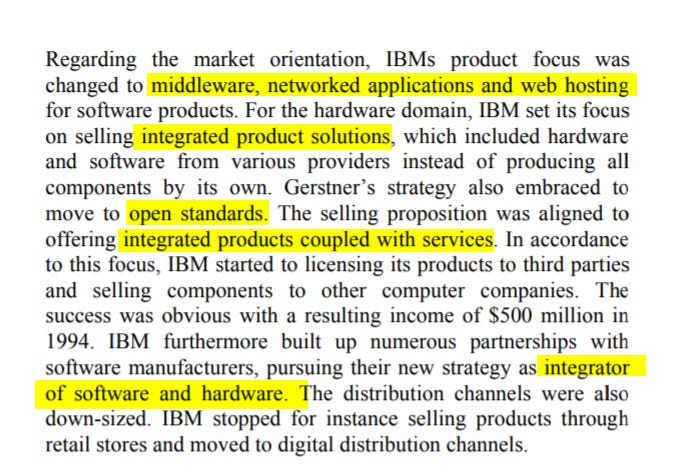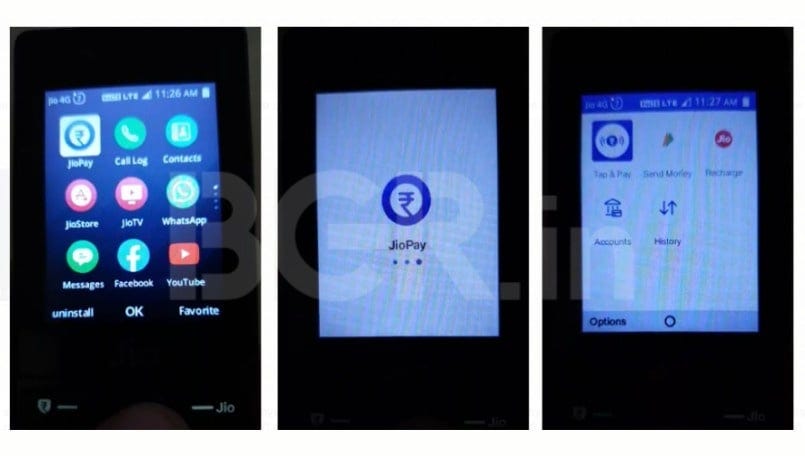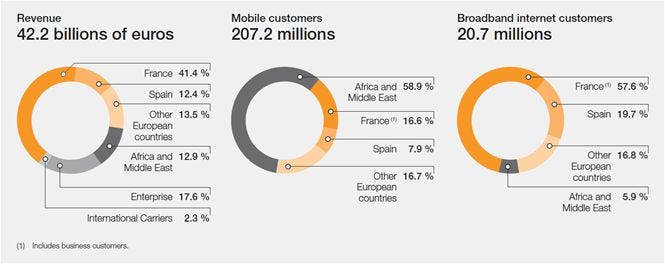Long Take: How IBM spinning-out $18B of managed infrastructure revenue, or Reliance Jio growing to 400MM mobile users, creates a chassis for digital finance
Hi Fintech futurists --
This week, we look at:
IBM spinning out its managed services division with $18 billion of revenue in order to focus on hybrid cloud and digital transformation
Reliance Jio, the Indian mobile telecom provider with 400 million users, contemplating financial services with backing from Google and Facebook
The role that technology infrastructure plays in the delivery of financial services
For more analysis parsing 12 frontier technology developments every week, a podcast conversation on operating fintechs, and novel food-for-thought essays, become a Blueprint member below.
Announcements
Check out Bella, a bank project launched by Will Beeson. Love the love.
Still really excited about this. ConsenSys Introduces Token Swaps for MetaMask. Check it out on Firefox.
Long Take
Last week we talked about the fantastical worlds into which finance will be interwoven -- from virtual communities to augmented reality. Let's do a complete turn this week to talk about infrastructure. Not financial infrastructure, there's enough of that already! Rather, communications and enterprise infrastructure.
In particular, we want to discuss two behemoths: IBM, the consulting and technology company, and Reliance, the Indian conglomerate. We are, of course, interested in the ways that the dynamics of such companies impact financial services, and the provision of those services across the world. But let's start at the beginning.


IBM is no stranger to business change and model pivots. Having largely lost the personal computer era to other technology firms, IBM repositioned in the 1990s as an enteprise services business. Instead of trying to compete as a vertically integrated company along the same dimensions as everyone else, it leaned into its strengths with large corporates, and bundled high-end technology infrastructure with services that delivered strategy and software integrations built on open standards. Sound familiar? *cough blockchain*
Last week, the company announced a planned spin-off for its Managed Infrastructure Services unit by end of 2021, which currently generates about $19 billion out of IBM's $75 billion of revenue (give or take). For those of us uninitiated in the details of how corporate America rents hardware and software solutions, this stuff can seem cryptic. But it needn't be. This Forbes article by Joe Cornell of Spin-Off Research lays it out for us in a neat org chart. Or see this article that references the transaction slides.


The unit called Global Technology Services is the one being mostly spun out, and it focuses on Information Technology modernization. To us, that implies bespoke data centers managed by an outsourced company, with a layer of human support and a value proposition around cost and efficiency. The rest of IBM is trying to orient towards frontier technology like hybrid cloud, blockchain, and artificial intelligence as a service. Of course, the extra juice comes from digital transformation consulting.
Other industry analysts have noted that being a company selling digital transformation is a better proposition than being a company experiencing digital transformation.



IBM is keeping the frontier and emphasizing the concept of delivering *platforms*. Those platforms solve specific business problems for particular industries, and do so through both financial and computing products. Anything that is not driving to adoption of a public or private cloud infrastructure, bundled with cognitive systems and robotic process automation, is getting left behind as a commodity.
You could also look at the things IBM is committed to doing, and see the Chinese national investment plan for 2025: industry, trade, cloud, blockchain, telecom, artificial intelligence.

The last bit in the image above is what is important. It's not that the "infrastructure" matters on its own, full stop. But rather, the infrastructure is an enabler of integrated, large-scale commercial outcomes. If you mix together smart cities with 5G networks and public/private cloud, you might get permissioned self-driving cars. If you mix together data hosting for financial services companies with machine vision, you might get Google Cloud launching Lending DocAI -- a mortgage document reading and underwriting tool.

Is there anyone who still thinks that the high-tech firms are not in financial services? Or that they won't use their power over data, hardware, and politics to take over? Is it really hard to go from having a machine that has learned how to extract data needed to underwrite, to a machine that has learned how to underwrite? Or one that hosts a marketplace of interchangeable capital to compete for underwriting?
In another IBM-related development, the company announced a partnership with technology competitor R3. Both firms are focused on enterprise blockchain, with IBM distributing solutions largely in the global trade sector using Hyperledger Fabric, and R3 doing the same across financial services using R3 Corda. The main counter-balance to Corda and Fabric is Enterprise Ethereum, delivered by ConsenSys as either ConsenSys Quorum or Hyperledger Besu. Our key takeaway in the context of the previous framing is that for IBM, end of the day, digital transformation on an open source stack is the cash cow for the next 10 to 20 years.
Standing up and maintaining such modern infrastructure allows it to play not only at the infrastructure layer -- where it can be indifferent about profitability -- but also at the application and use-case layer, where a large part of the economics is being captured.
Enabling Communications
Let's switch over to looking at Reliance Jio, the mobile telecom spin-off from the even larger conglomerate Reliance.

In a world where China's telecom and media infrastructure providers are being penalized for being Chinese -- see TikTok, Tencent, and Huawei -- an Indian competitor can become positioned as strategically important to American geo-political interests. Jio Platforms has raised over $20 billion from US corporate investors, including Facebook and Google, and is now at the center of global competition. The core value proposition is to provide Internet and data connectivity at a price point affordable to the majority of Indian users. This has led to a price war in the Indian telecom industry, and a fast rise for Jio.


As an aside, let's remember that India has one of the most advanced national identity projects in the world, called Aadhaar. It combines biometric, demographic, and other identifiable data under a 12-digit identity number available to citizens. That digital identity can then be used to authenticate into / access financial and mobile products. The system is certainly controversial, with the Supreme Court ruling on a number of constitutional questions arising out of the government's implementation and requirements -- should digital identity of this sort be mandatory for property ownership, or Covid testing, or medical coverage?
Notably, Aadhaar has powered billions of KYC transactions for users interacting with commercial services. There's a certain irony in the narrative that the Chinese surveillance state and its technology companies are seen as problematic in the treatment of user data, but the same questions are not similarly applied here. A growing correlation between mobile use and mandatory digital identity is likely.


Anyhow, to keep on pace with competition and expand its userbase, Jio is involved in launching a 5G Android phone and a dedicated browser that works in the JioPhone form-factor. Further, it is now also playing in the payment space and competing against Paytm -- trying to stand up QR and NFC payments through the National Corporation of India's Universal Payments Interface system, as well as through partnerships with multiple financial institutions -- Axis, ICICI, HDFC, Standard Chartered, IndusInd, SBI, Kotak, YesBank, RBL Bank.
So what can we learn? This leading Telecom has been able to grow market share by targeting the inexpensive side of the market with cheaper hardware and access. But even at this price point, phones are computationally smart. They can run applications, like WhatsApp from Facebook, and they can run operating systems, like Android from Google. Similarly, they can run payments services and sell financial products.

Over time, do you think the Jio Phone will be more or less performant? Will it look more or less like the iPhone? Will the manufacturer of this phone, and therefore the company controlling the user experience of 400 million people, have more or less say about how financial products are consumed by those people?
Yes, we should look at Blackberry and Nokia and acknowledge that those manufacturers failed out. Not every attempt works! But we can also look at Orange Bank, and acknowledge that sometimes things do work indeed. We are not sure these are the right apples to apples (to oranges!) numbers, so treat them with a grain of salt. But hopefully this is directionally helpful. Two charts on Orange follow.


Orange is a French telecom with about 200 million mobile customers and about 1 million monthly average users. That's a conversion rate of 0.50%. If Jio launched a bank, we think it would have at least 2 million users. When you combine that organic estimate with the likely additional growth from a Facebook/Google partnership, the likely footprint would be closer to 5-10 million people in the medium term.
We previously looked at where financial services can grow up in an economy, and zeroed in on (1) public and national banking infrastructure, (2) banking rails and card networks, (3) telecom and SMS rails, and (3) high tech applications and social networks. For India in 2018, we had a blind spot around Telecom providers as shown below. But this is an opportunity. The affordable phone, combined with a localized version of high tech, integrated into both banking and national financial rails, can be a powerful delivery mechanism for a financial payload to millions of people. At the least, it is an experiment worth running.

Key Takeaway
Infrastructure -- whether telecom, managed services, or otherwise -- is a key determinant of which application or use-case wins on top. If the Internet and its protocols were not open source, do we think that a search engine with an advertising company attached would be one of the world's most valuable stocks? Probably not.
Yet the shape of infrastructure does not just materialize on its own. It reflects the technology available within an economy, its customer segments, and the overall market structure.
IBM is becoming a cloud-first company delivering digital transformation projects through AI and blockchain, because that is the soil in which it grows. Large companies are spending money on "digitizing" and using cloud, and spending less time trying to rent data centers. Jio is a derivative on the digitization of Indian society, and an individual's economic capacity to pay for web connectivity. In each of these cases, financial services products can be woven into the experience of the clients as part of the software environment. Financial products are not products. They are features. They are fruit on the Apple tree.

For more analysis parsing 12 frontier technology developments every week, a podcast conversation on operating fintechs, and novel food-for-thought essays, become a Blueprint member below.


